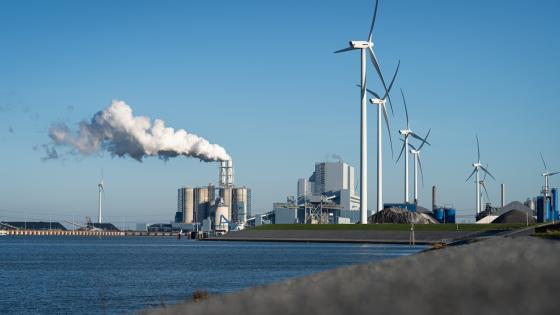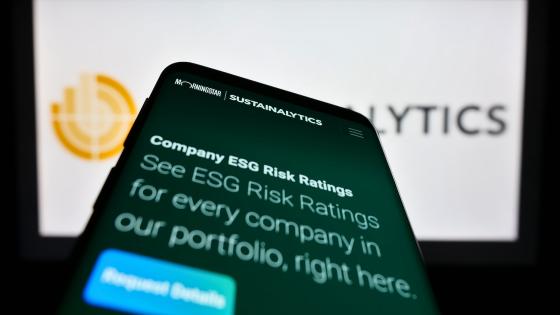Can renewable energy save the world from climate change and do so at a reasonable cost? President Obama suggests that it can. In his Inaugural Address, he promised to “… harness the sun and the winds and the soil to fuel our cars and run our factories.” Along these lines, the US Department of Energy asserts that 10% of US electricity should come from renewable sources by 2012 and 25% by 2025. Other industrial countries have similar goals. Are they feasible, and, if so, at what cost?
The baseline cost of non-renewable electricity
The cost of electricity from a modern efficient coal power station is:
- Between 6 and 7 cents/kWh, that from natural gas costs about the same;
- Nuclear electricity costs between 8 and 9 cents (Du and Parsons 2009).
To provide benchmarks against which to judge renewable sources0, we need to adjust the fossil fuel costs for the costs of greenhouse gases emitted.
Coal is particularly sensitive to these, as a large coal-fired power station uses about 10,000 tons of coal per day, each ton generating between 2 and 3 tons of carbon dioxide. At $25 to emit a ton of CO2, we are adding over half a million dollars to the daily operating costs – a consequence of emissions that can run to millions of tons annually per power station. No wonder environmentalists are hostile to coal!
- $25 permits add about 2 cents to the cost of electricity from coal, and about 1 cent to the cost from gas, for total of around 8.5 and 7.5 cents respectively.
As an aside, a recent report of the US National Academy of Sciences estimated the external health costs of coal-based electricity, leaving out the greenhouse gas effects, as 3.6 cents/kWh (National Academy 2009).
How do renewables compare?
The cost of wind power depends on the strength and reliability of the wind, the latter being measured by the wind turbine’s capacity factor. A 30% capacity factor means that a wind turbine rated at 1 megawatt maximum capacity will on average over the course of a year produce at 30% of that level. Capacity factors in the range 25 – 40% are typical for wind. At a capacity factor of 25% you have to install 4 megawatts to be sure of getting on average 1 megawatt, which of course boosts the cost of wind power.
There is also an issue with transmission costs, as locations with strong and reliable winds are often distant from sources of demand for electricity, and extending a grid can cost in the range of $2 million per mile.
- Leaving aside the transmission costs, wind from a good site can cost in the range of 6 to 10 US cents/kWh, certainly competitive with coal after including the cost of greenhouse gas emissions, perhaps even before.
Solar power is more expensive. It comes in two varieties:
- Solar photo voltaic (PV), and
- Solar thermal or concentrated solar power (CSP).
Solar photovoltaic panels exploit the photoelectric properties of silicon and generates an electric current as a result of photons of sunlight knocking electrons out of silicon films. Power from this source has typically cost a lot – over 20 cents per kWh.
But the price of silicon film has fallen by 50% during 2009 and is still falling, largely as a result of a huge increase in production capacity in China. The cost of electricity from solar photovoltaic technology will probably be in the teens when the new film costs are reflected in new power stations. Experts expect solar film prices to fall even further, so there is some prospect of solar photovoltaic being competitive with coal after allowing for CO2 costs within a few years.
Solar thermal or concentrated solar power concentrates the sun’s heat to generate steam and drive a turbine, the usual method of generating electricity. This is currently the less costly of the two solar technologies, costing about 12 US cents per kWh.
Intermittency problems
Solar and wind power in all their forms are intermittent:
- The output of a solar photovoltaic plant can drop from 50 megawatts to close to zero in seconds if a cloud passes over the sun, and then surge up again when the sky is clear.
- The output of a wind power plant can drop from 100 megawatts to 10 or less in a few hours if the wind dies down (see MacKay 2009).
This poses problems for grid managers, who have to match the supply of electricity to the demand on a minute-by-minute basis. They have two lines of response – signing interruptible contracts with some of their customers, who agree to be disconnected at short notice if there is an excess demand for power, and constructing generating capacity that can be turned on or off at very short notice. Gas turbines are popular for this purpose, though some grids use hydropower as the swing power source to compensate for variations in the output of renewable sources.
The need to build flexibility into demand and supply imposes an additional cost on grids that use wind or solar power. The size of this cost seems to increase with the proportion of the power that comes from intermittent sources; for 30% of power from such sources, the cost could be about 3 US cents/kWh.
Concentrated solar power is preferable to wind and solar photovoltaic from an intermittency perspective. Concentrated solar power stations can store heat and continue to produce electricity even after the sun has set. They do this by heating a heat-retaining substance – molten salt is currently popular – and storing it. New Chinese concentrated solar power stations are said to be able to store heat for several days using ceramics.
Biofuels
Biofuels are another source of renewable, carbon-free energy. About 17% of Brazil’s ground transportation fuels are biofuels, mainly bioethanol from sugar. Competitive with oil at an oil price of around $60-70 per barrel, a level at which prices currently seem stable, the downside of biofuels is that they require land and water, both of which are scarce and likely to become scarcer as the global population moves towards 9 billion and the climate change alters hydrological cycles and agricultural productivity (Schlenker et al. 2006). Although the issue is far from settled, studies are beginning to suggest that it will not be possible to meet world’s demand for food and also supply a significant fraction of its energy from biofuels (Deutsche Bank 2009).
Meeting our energy needs with renewable sources
There are other renewable sources of energy – geothermal, wave, tidal, in-stream hydro and waste-to-energy. Currently none of these seems likely to be available on a sufficient scale to meet a useful fraction of our energy needs in the next two decades.
Where does this leave us with renewables as a solution to the problem of climate change? We can replace some fossil fuel power with renewable power without a major cost increase, but we cannot hope to replace a major fraction of our fossil power with intermittent power sources such as wind and solar – unless we can develop storage technologies. Being able to store power and smooth the output of intermittent power sources would greatly enhance the attractions of renewable power.
Without such storage technology, we will have to rely on non-renewable but carbon-free power sources – such as nuclear power and coal with carbon capture and storage – to provide a significant part of our power. As noted earlier, nuclear is no more expensive than coal with a carbon charge, although of course there are risks that are specific to nuclear power (Heal and Kunreuther 2009). The cost of capturing and storing CO2 emissions from coal power stations are not yet known, though we do know that this can be done from successful pilot projects. It will probably take the cost of electricity from coal above 10 cents/kWh.
To replace 25% of current electric capacity in the US by wind power would require an investment of at least $2 trillion (Heal 2009), more for solar, without allowing for extensions and enhancements to the grid. To do this over the next 15 years would require allocating about 1% of current GDP to renewables each year – a large but feasible number.
The bottom line is that neither costs nor capital requirement will prevent us from decarbonising the electricity supply. The real obstacle to doing this largely with renewables is our current inability to store power, and as long as we cannot store power we will need to use non-renewable sources like nuclear and coal with carbon capture and storage.
References
Deutsche Bank Climate Change Advisors, (2009), Investing in Agriculture: Far-Reaching Challenge, Significant Opportunity.
Du, Yangbo and John E .Parsons (2009), “Update on the cost of nuclear power”, MIT Center for Energy and Environmental Policy Research Paper 09-004, May.
Heal, Geoffrey (2009). “The Economics of Renewable Energy,” NBER Working Paper 15081, forthcoming, Review of Environmental Economics and Policy.
Heal, Geoffrey and Howard Kunreuther (2009), Environment and Energy: Catastrophic Liabilities, forthcoming in Deborah Lucas ed Measuring and Managing Federal Financial Risk, NBER.
MacKay, David J. (2009), Sustainable Energy – Without Hot Air.
National Academy of Sciences (2009), Hidden Costs of Energy: Unpriced Consequences of Energy Production and Use, National Academies Press.
Schlenker, Wolfram, Michael Hanemann and Antony Fisher (2006), "The Impact of Global Warming on US Agriculture: An Econometric Analysis of Optimal Growing Conditions," Review of Economics and Statistics, 88(1), February, p. 113-125.


